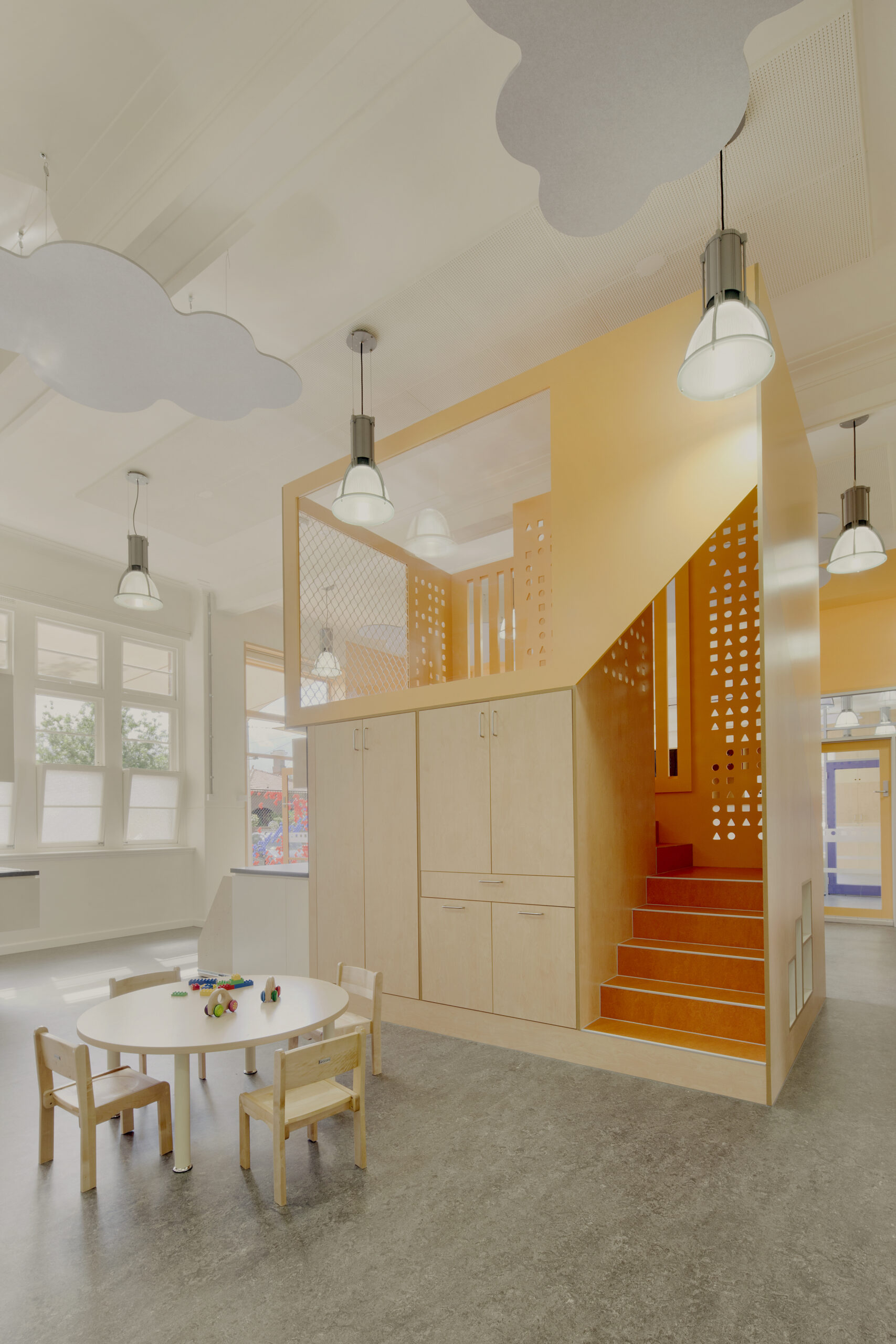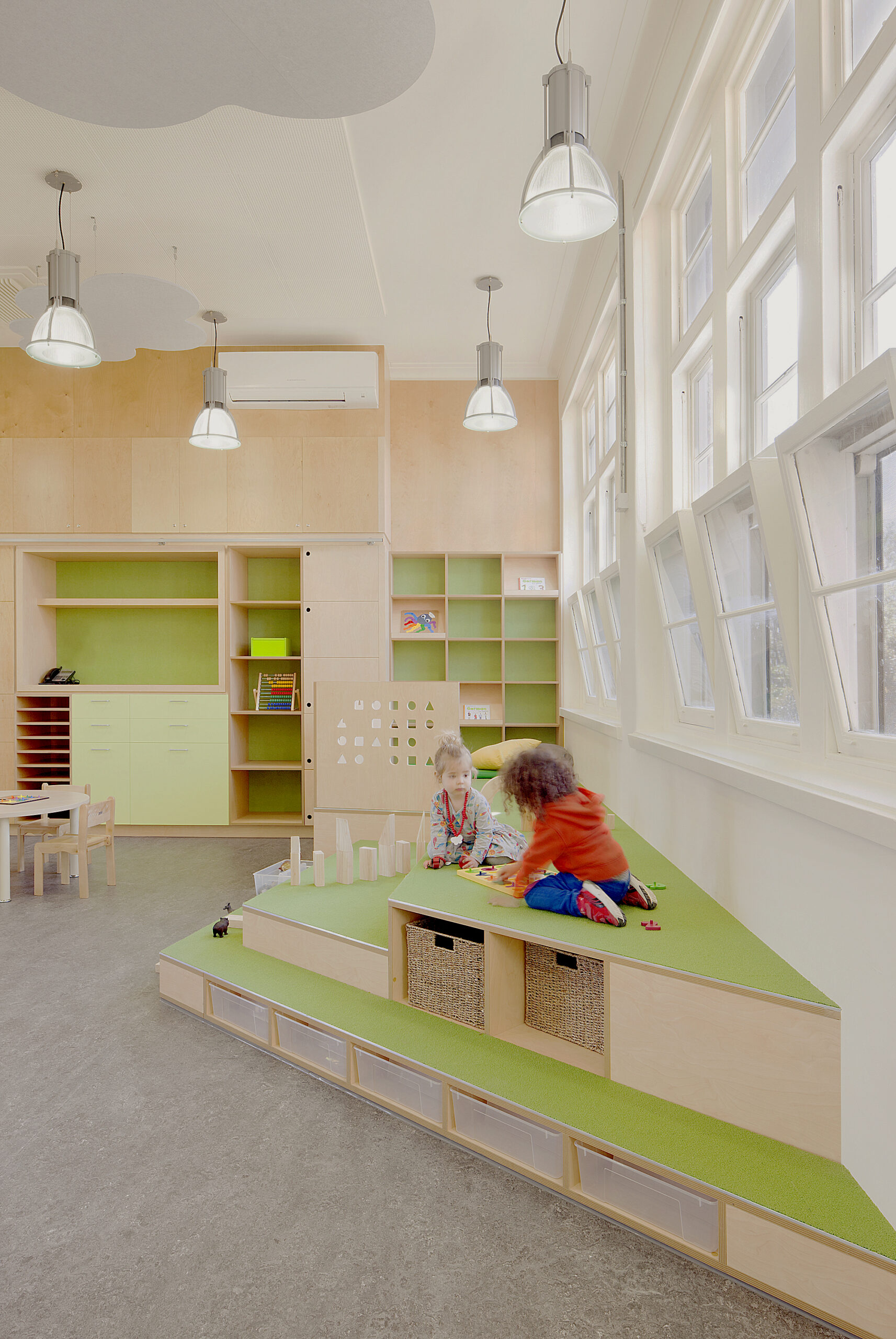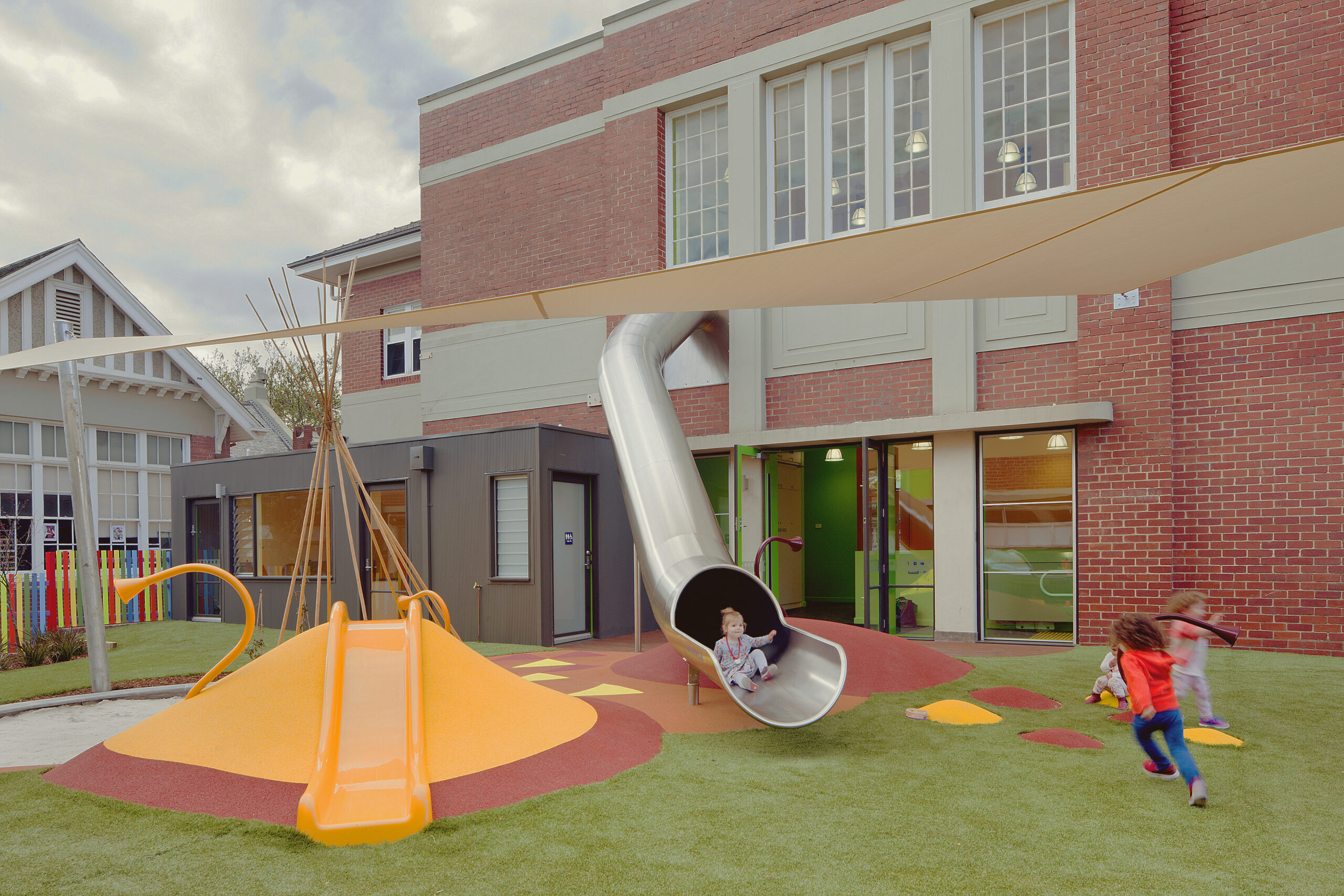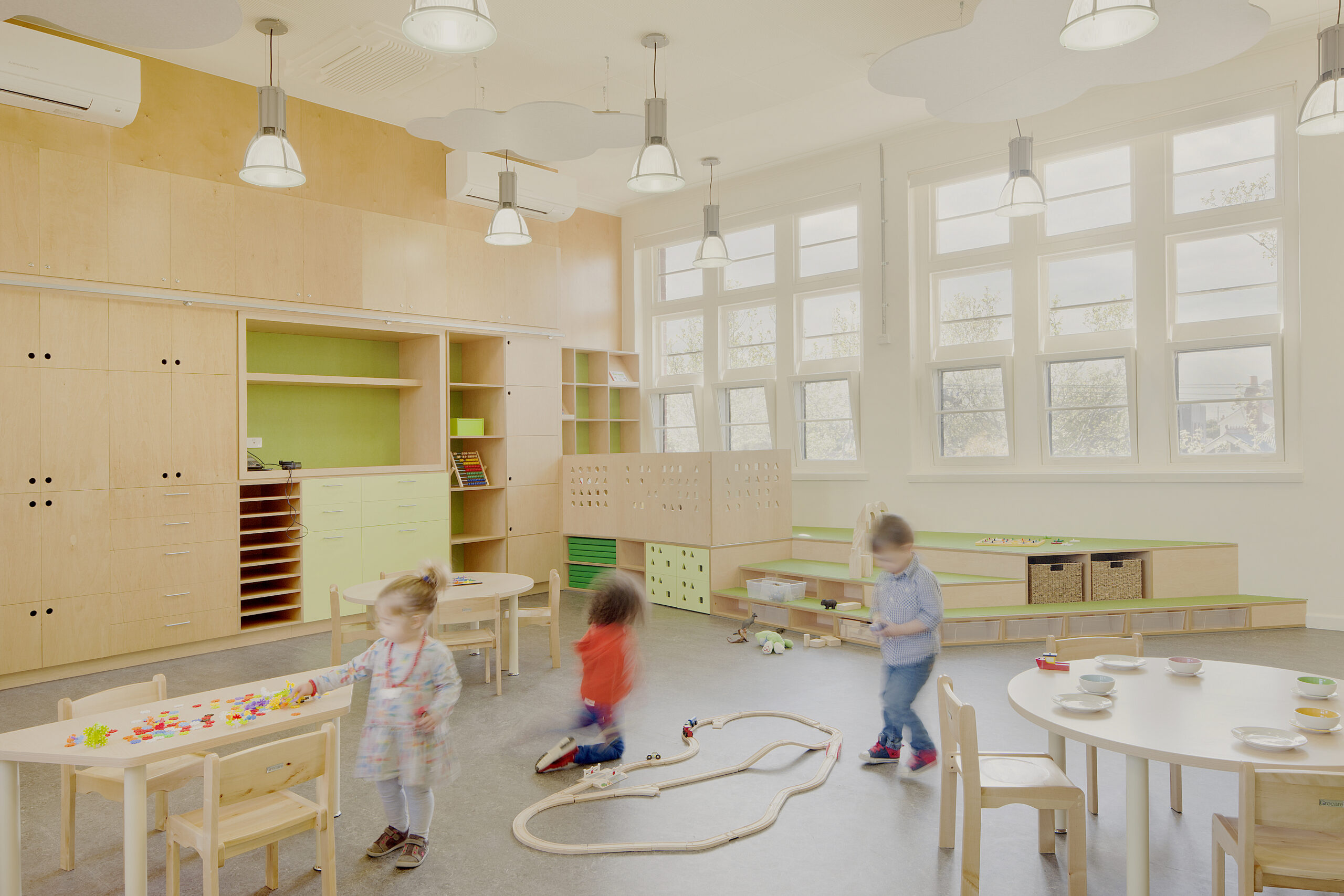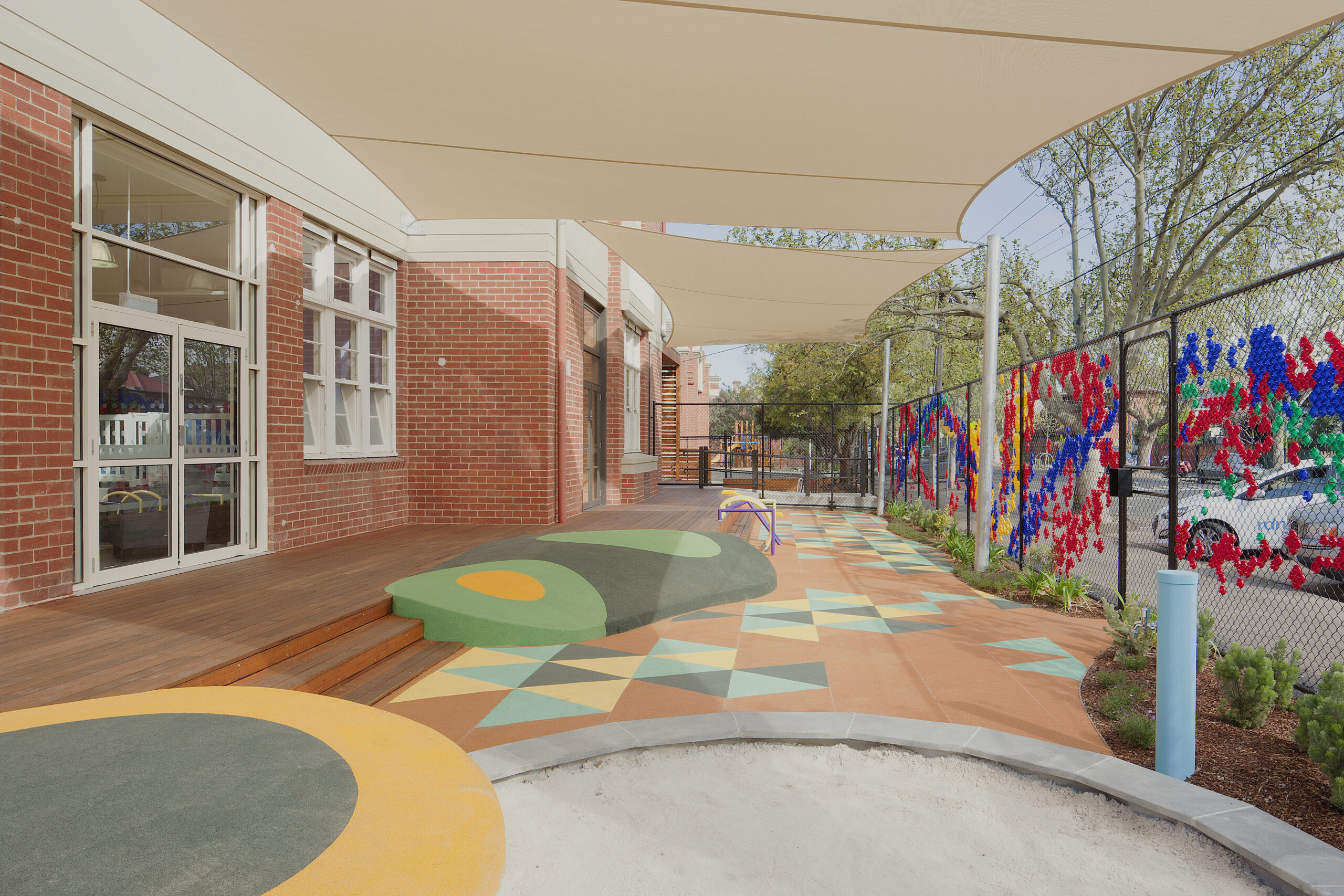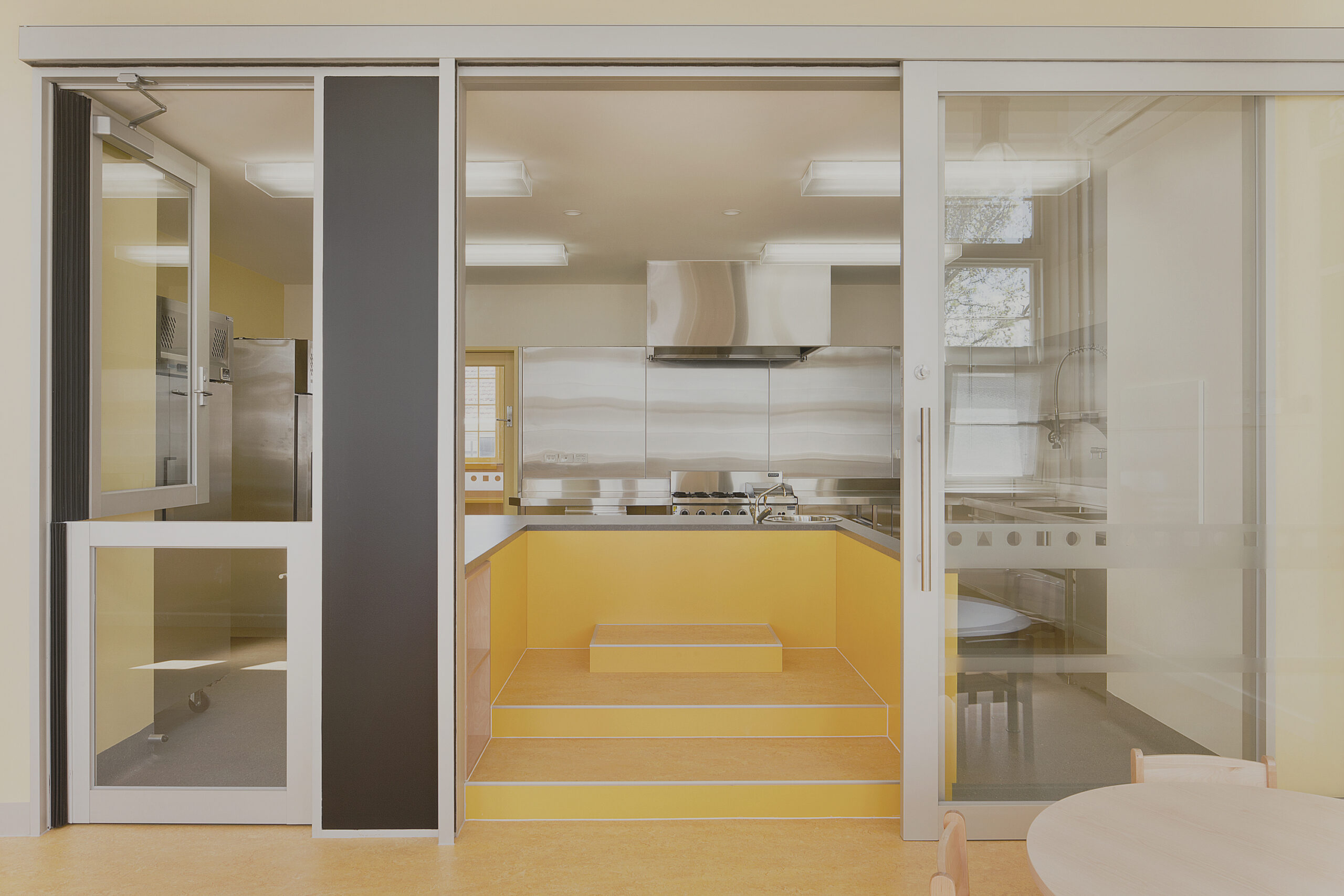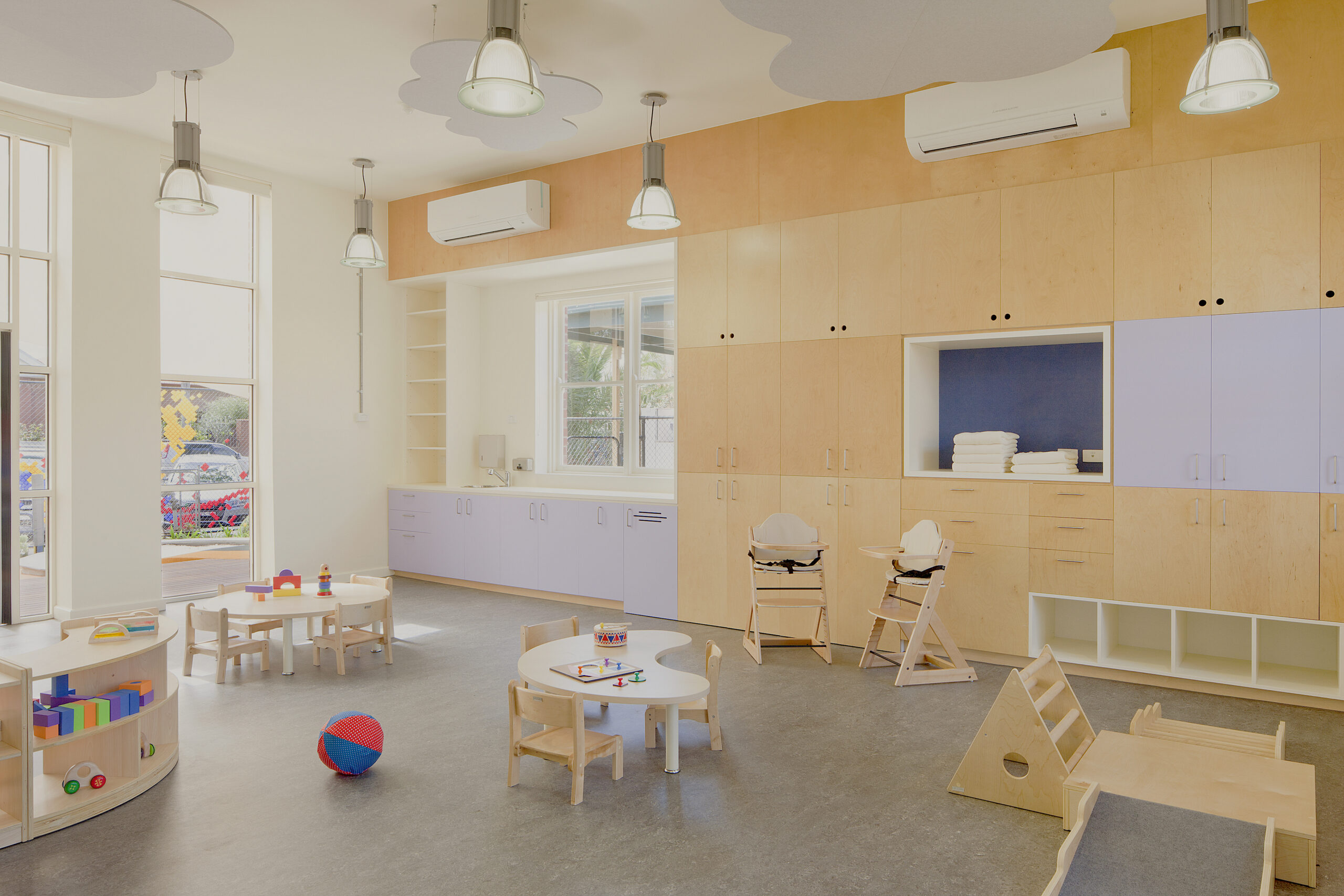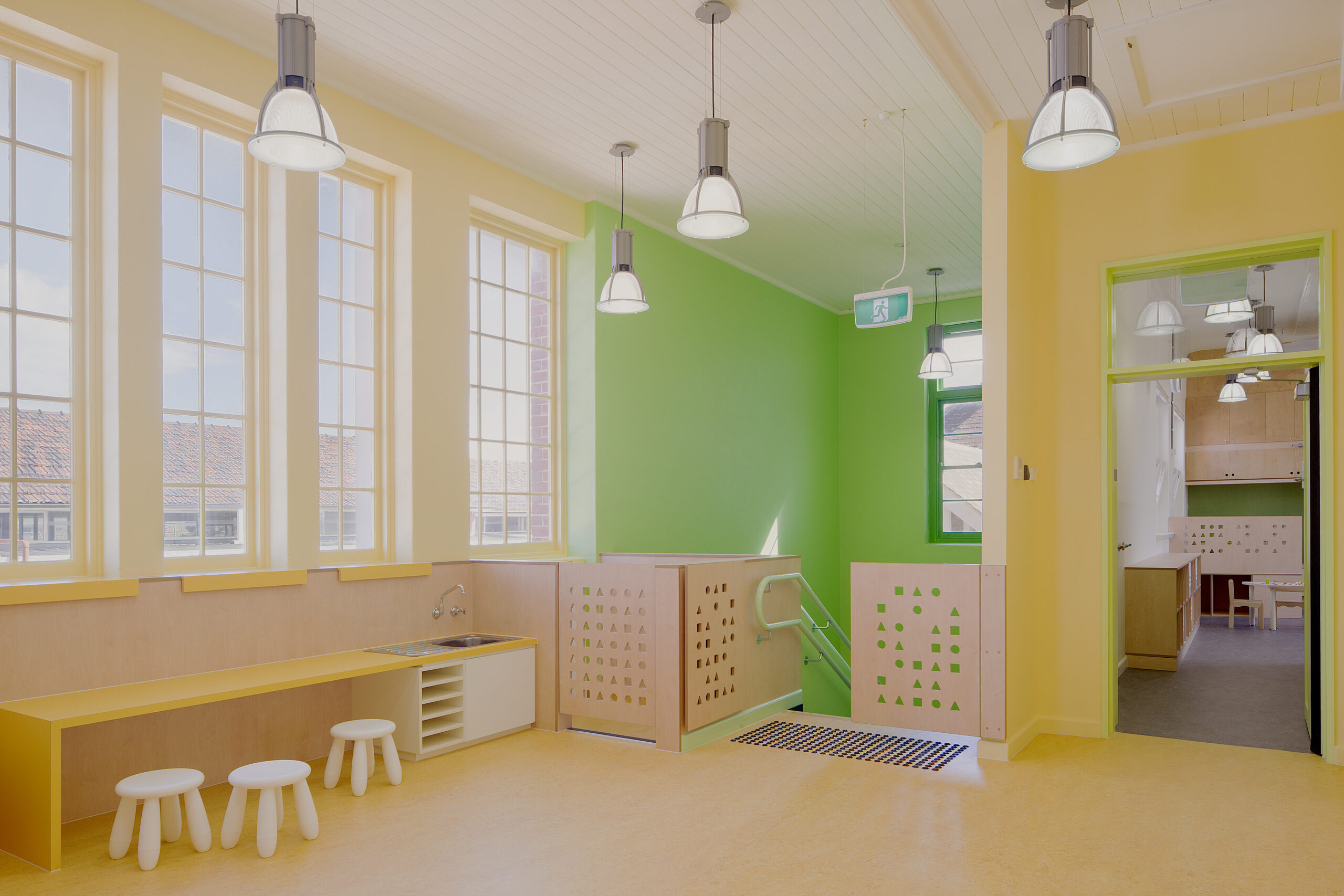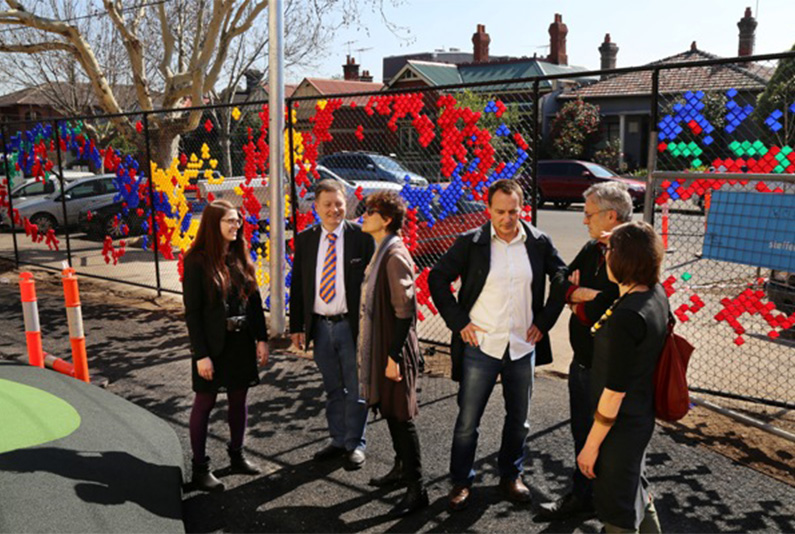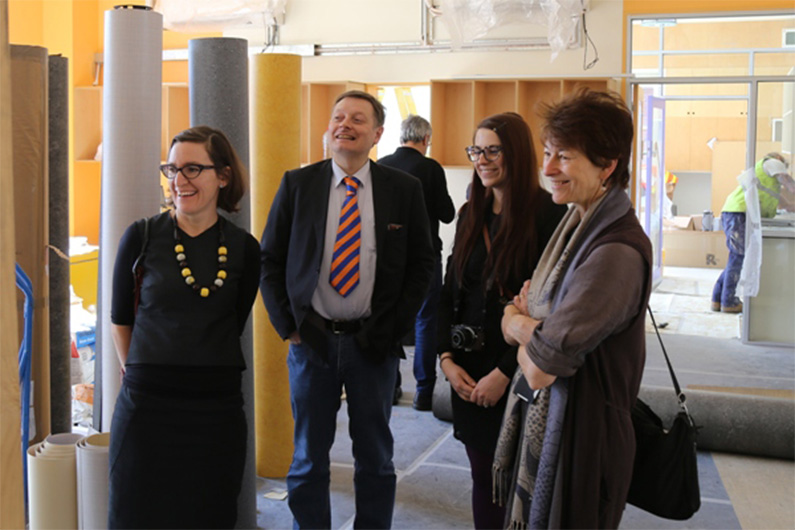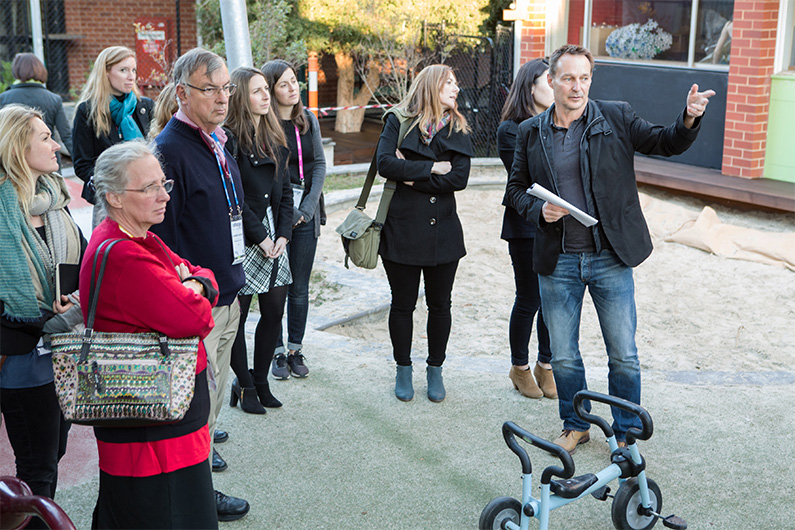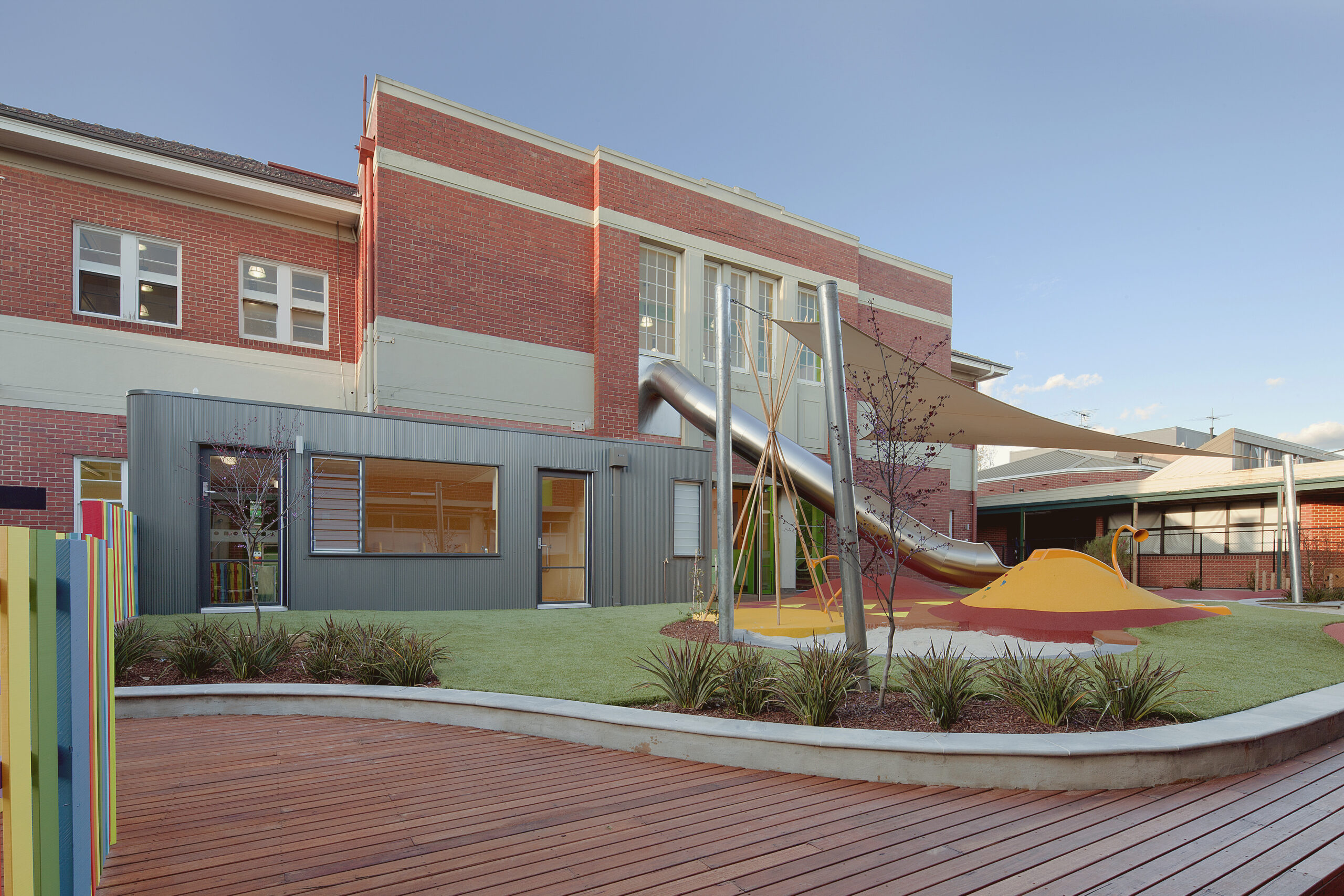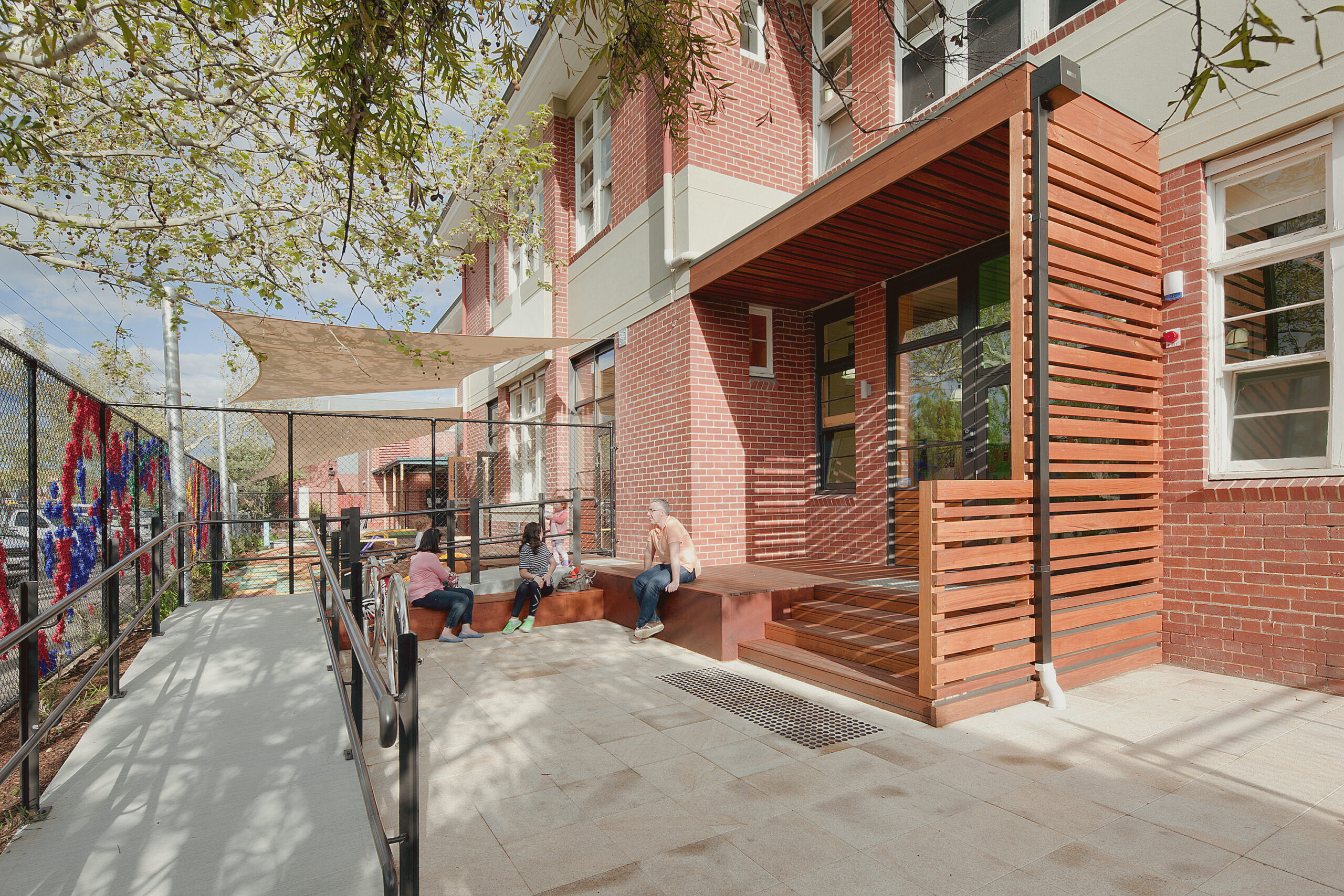Featuring five separate classrooms, each one a different colour, the design includes kitchens and kitchenettes, staff areas and a whimsical arrangement of furniture and play areas that also responds to the strict building codes – window sills, for example, need to be 500 millimetres above floor level to ensure young children can benefit from looking through windows. Likewise, elevated floors conceal valuable built-in storage. And the bright yellow kitchen takes the form of a series of broad platforms that enable children to reach the sinks and also be involved in the preparation of food on the kitchen’s stainless-steel benches. Treated as a ‘kitchen theatre’, it brings to the table the enjoyment of cooking from an early age. Given there’s a prescribed floor area, with a certain number of metres required for each child, what couldn’t be achieved at ground level was accomplished by tree-house like structures, also giving children other spaces to be on their own.
Plywood joinery, vinyl floors and extensive built-in joinery feature within the building in punchy and colourful hues, while the centres grounds are equally as imaginative – a large fully enclosed stainless-steel slide allows the older children to literally slide into the playground designed by landscape architect Katherine Silk, from the first floor. For Frobel, who was keen for children to explore spaces, this project centuries later is aimed at encouraging children to go well beyond the building’s brick walls.
